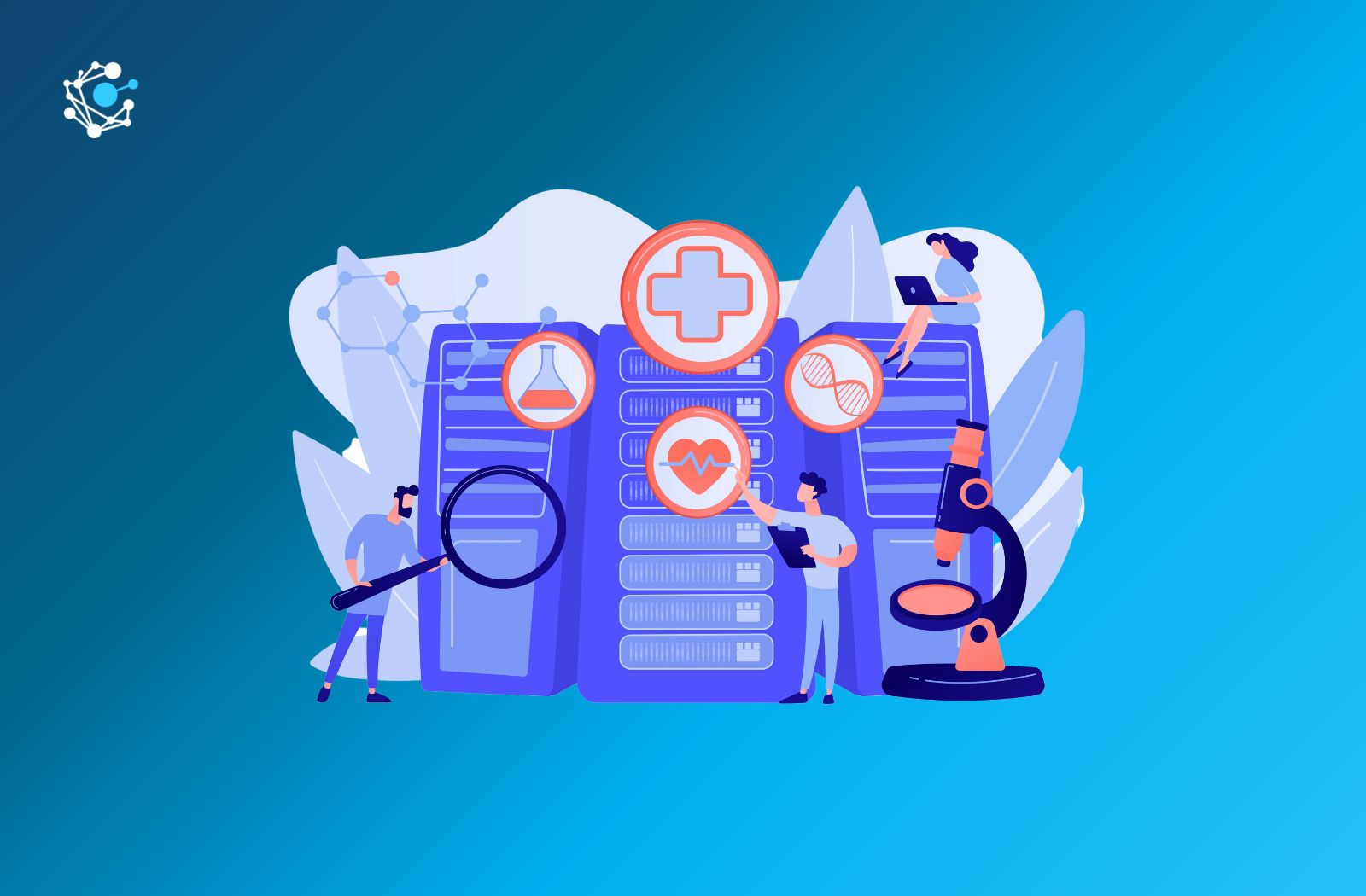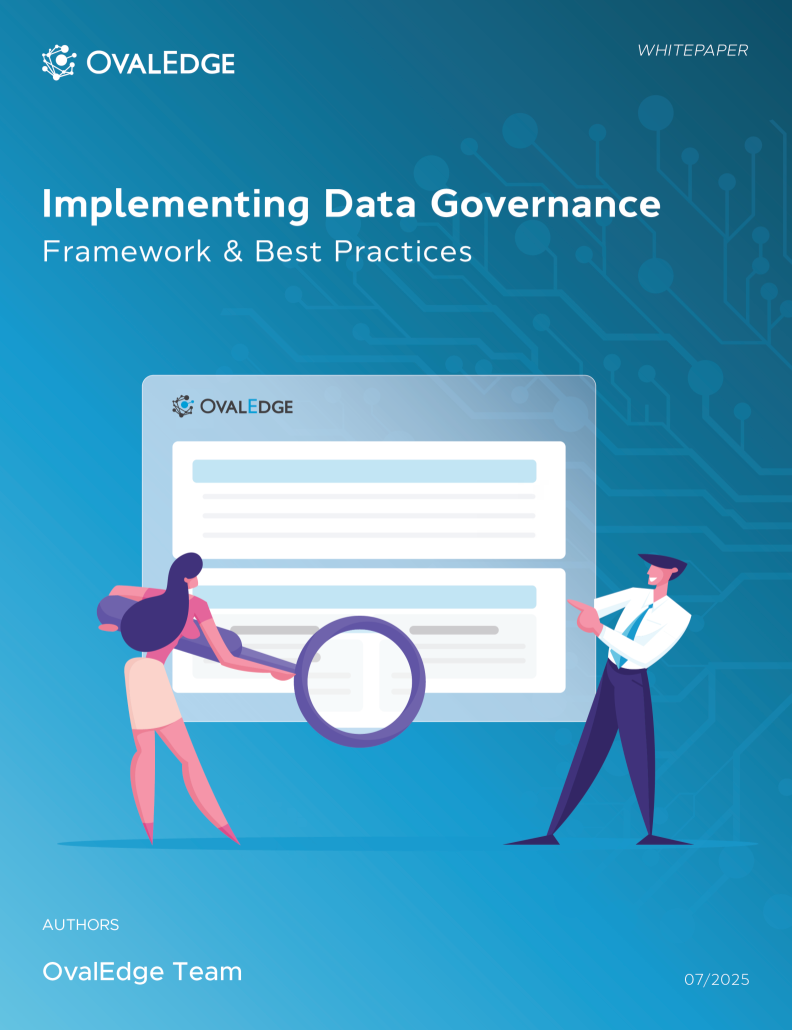Table of Contents
Data Governance in Healthcare: Importance, Benefits & Best Practices
It gets clearer each year that data is at the heart of most businesses, which makes it vital to maintain high-quality standards.
This is especially important to industries that rely on accurate information to keep people safe, such as healthcare.
In this Jama Network survey, 1 in 5 patients reported finding a mistake on their medical notes, and 40% perceived the mistake to be serious. These mistakes were in diagnosis, medical history, medications, physical examination, test results, and even notes on the wrong patient.
In fact John Hopkins University found in a recent study that about 250,000 people die each year in the US because of medical errors.
And nearly 62% of patients are concerned about the safety of their information, even though Statista's 2022 survey revealed that 73% are willing to share it to advance medical research.
This willingness to share data, combined with the very valid concerns, means that it’s more important than ever for healthcare businesses to take data governance seriously.
In this article we will cover:
- What is Data Governance in Healthcare?
- Why Is Data Governance in Healthcare Important?
- Benefits of Data Governance in Healthcare
- How to create effective Data Governance in Healthcare
- Implement Data Governance in Healthcare with OvalEdge
Analyze the various aspects of Data Privacy Compliance before revealing how OvalEdge can address them in your company. Download our whitepaper How to Ensure Data Privacy Compliance with OvalEdge
What is Data Governance in Healthcare?
Data Governance can be an intimidating phrase, but it’s actually not as complicated as people think.
Here is AHIMA’s definition of Data Governance:
The overall administration, through clearly defined procedures and plans, that assures the availability, integrity, security, and usability of the structured and unstructured data available to an organization.
The healthcare industry produces vast amounts of data on a daily basis, including patient records, medical research, and financial data. This data is critical to the functioning of the industry, from patient care to managing costs.
However, with the increasing amount of data being generated, it becomes challenging to manage and ensure its accuracy, completeness, and security.
Data governance addresses these challenges by providing a framework for managing data throughout its lifecycle. This includes how data is collected, stored, processed, analyzed, and shared.
By establishing standards and policies for data management, organizations can ensure the integrity and security of their data, while also maintaining compliance with regulatory requirements.
Why Is Data Governance in Healthcare Important?
Data governance in healthcare is crucial for several reasons.
Firstly, it helps ensure patient safety and privacy by maintaining the accuracy and consistency of their health information.
And with the increasing amount of data being generated in the healthcare industry, this can be a difficult task!
For example, in a big hospital, you’ll want to calculate the average length of stay. But across so many different people and departments, there’s likely to be more than one way to calculate this figure.
That makes it impossible to calculate an accurate average across the whole hospital.
On top of this, data governance also enables healthcare organizations to make informed decisions based on reliable data. This can lead to improved patient outcomes, cost savings, and better resource allocation.
It also promotes transparency, accountability, and compliance with regulatory requirements, such as HIPAA and GDPR.
Related: 3 Data Privacy Compliance Challenges that can be solved with OvalEdge
Benefits of Data Governance in Healthcare
Without Data Governance in healthcare, data is very segregated, with the same metrics being used in multiple places. This segregation also results in inconsistent language and definitions being used across the company.
This creates huge confusion, and effective Data Governance implementation solves these problems.
It does this by creating a consistency of metrics and reporting across the company. This allows you to present your data accurately, and have precise and reliable data accessible to everyone.
Then once these standards have been implemented, the decision making becomes much easier. People in your company can start making data-driven decisions, which ultimately results in better patient safety.
For example, if you can more accurately calculate things like average wait time or mortality rate, you can make decisions that will directly save lives. Whether it’s because you can better prioritize patients, or simply because you can better predict timelines.
It will also improve patient outcomes, cost savings, and better resource allocation.
By ensuring the quality and security of patient data, healthcare organizations can provide better care and treatment to patients. This can lead to improved patient outcomes, such as faster recovery times and reduced readmission rates.
Data governance can also help healthcare organizations save costs by identifying areas where resources can be allocated more efficiently. For example, by analyzing data on patient outcomes and resource utilization, organizations can identify areas where they can reduce costs without compromising quality of care.
In addition, data governance promotes transparency and accountability, which can help to build trust with patients and other stakeholders. By ensuring that data is managed in a responsible and ethical manner, healthcare organizations can demonstrate their commitment to patient safety and privacy.
Finally, data governance can help to maintain compliance with regulatory requirements, such as HIPAA and GDPR. Although it’s worth noting that the strict adherence to HIPAA regulations across healthcare meant that the industry was largely unaffected by GDPR.
Related: Data Governance and Data Quality: Working Together
How to create effective Data Governance in Healthcare
There are a number of steps involved with creating effective Data Governance in healthcare:
Organizing
Although there are many ways to organize, Data Catalog is one of the most efficient ways to organize your data. In order to effectively analyze your data, it is crucial to first identify all of your data sources and to gather all of your metadata in one central location.
Without the right tools, this process can be time-consuming, but it is essential for ensuring accuracy and completeness in your analysis. Especially when you collect the metadata. Once you have gathered all of your metadata, you can begin to explore and analyze it in greater depth, uncovering insights and patterns that can inform decision-making and drive business success.
We go into more detail in our Building a Business Glossary post, but here’s a breakdown of the steps to create your own business glossary:
- Create a Data Governance group
- Determine where, how, and who is using the terms
- Identify and consolidate
- Standardize terms and definitions and input them into your business glossary
Securing
As we’ve already touched upon, ensuring that your data is compliant with data privacy regulations and internal company policies is crucial for any organization.
You need to take a proactive approach in protecting data privacy and security, especially as data breaches become more common.
This involves implementing strict policies and procedures for collecting, storing, and using data, as well as regularly reviewing and updating these policies to keep up with changing regulations and industry standards.
Additionally, you should provide training and resources for employees to ensure they understand their responsibilities in safeguarding sensitive data.
By taking these steps, you can build trust with their customers and stakeholders, and mitigate the risks associated with data breaches and regulatory non-compliance.
Managing data
Once you have thoroughly analyzed and organized your organization's data, the next step is to consider how you will communicate this information to your team.
This is a crucial step in ensuring that your team understands the insights you have uncovered and can take appropriate action.
One possibility is to create visualizations, such as graphs or charts, that illustrate the data in a clear and concise manner. Another option is to hold a meeting or presentation to discuss the data and provide context for its significance.
Case Study: Appeal Reduction for a Healthcare Revenue Lifecycle Management Company
Implement Data Governance in Healthcare with OvalEdge
OvalEdge is an advanced Data Governance platform, designed to give larger healthcare companies the tools you need to solve data management at a larger scale.
Collection
Before anything else, you need to bring your data together. We do this in OvalEdge using the Data Catalog.
The data catalog gives you access to all of your data sources, wherever they are, in one place. This is the foundation on which everything else is built.
Standardization
Then you need to standardize your data using a business glossary. This is a list of terms and definitions, organized in a clear and accessible way.
This allows anyone within the company to access it, and talk about data in a standardized and understandable way.
Once you’ve standardized your data, the next step is to classify and tag it. Here, you can create connections between different data, wherever it’s stored.
Security
Once your data is standardized, you need to secure your data. You do this using our Data Access Management tools.
You can centrally manage access to all your data, ensuring sensitive patient data is only accessible to the right people.
You can also create robust data access policies, to ensure you remain compliant with key regulations.
Popularize
Now your data is in an organized and secure state, it’s then critical to let everyone know they have access to the data they need.
Everyone in the hospital should be trained and encouraged to use OvalEdge to make their jobs easier, and improve their decision making.
This includes data discovery, data literacy, and integrating the data with various tools and methodologies they need.
Manage (with processes)
Finally, you need to have processes in place so that people can efficiently manage their data.
Especially important is people taking ownership and managing the metadata. This includes policies, procedures, tools, and manual curation of metadata.
This will ensure the data remains consistent and useful, to everyone in the company.
Frequently Asked Questions (FAQs)
Q1. What is the main goal of data governance in healthcare?
To ensure that patient and organizational data remains accurate, secure, and compliant with regulatory frameworks.
Q2. How does data governance improve patient outcomes?
By ensuring data integrity, healthcare providers make faster, evidence-based decisions that enhance care delivery.
Q3. Is data governance mandatory under HIPAA?
While not explicitly named, HIPAA mandates practices that align with data governance principles—security, integrity, and accountability.
Q4. What challenges do hospitals face in implementing governance?
Data silos, legacy systems, and lack of standardized definitions are key challenges.
Q5. What tools help with data governance in healthcare?
Tools like OvalEdge, Collibra, and Alation offer data cataloging, classification, and policy enforcement capabilities.
What you should do now
|
OvalEdge recognized as a leader in data governance solutions
.png?width=1081&height=173&name=Forrester%201%20(1).png)
“Reference customers have repeatedly mentioned the great customer service they receive along with the support for their custom requirements, facilitating time to value. OvalEdge fits well with organizations prioritizing business user empowerment within their data governance strategy.”
.png?width=1081&height=241&name=KC%20-%20Logo%201%20(1).png)
“Reference customers have repeatedly mentioned the great customer service they receive along with the support for their custom requirements, facilitating time to value. OvalEdge fits well with organizations prioritizing business user empowerment within their data governance strategy.”
Gartner, Magic Quadrant for Data and Analytics Governance Platforms, January 2025
Gartner does not endorse any vendor, product or service depicted in its research publications, and does not advise technology users to select only those vendors with the highest ratings or other designation. Gartner research publications consist of the opinions of Gartner’s research organization and should not be construed as statements of fact. Gartner disclaims all warranties, expressed or implied, with respect to this research, including any warranties of merchantability or fitness for a particular purpose.
GARTNER and MAGIC QUADRANT are registered trademarks of Gartner, Inc. and/or its affiliates in the U.S. and internationally and are used herein with permission. All rights reserved.



.webp)


